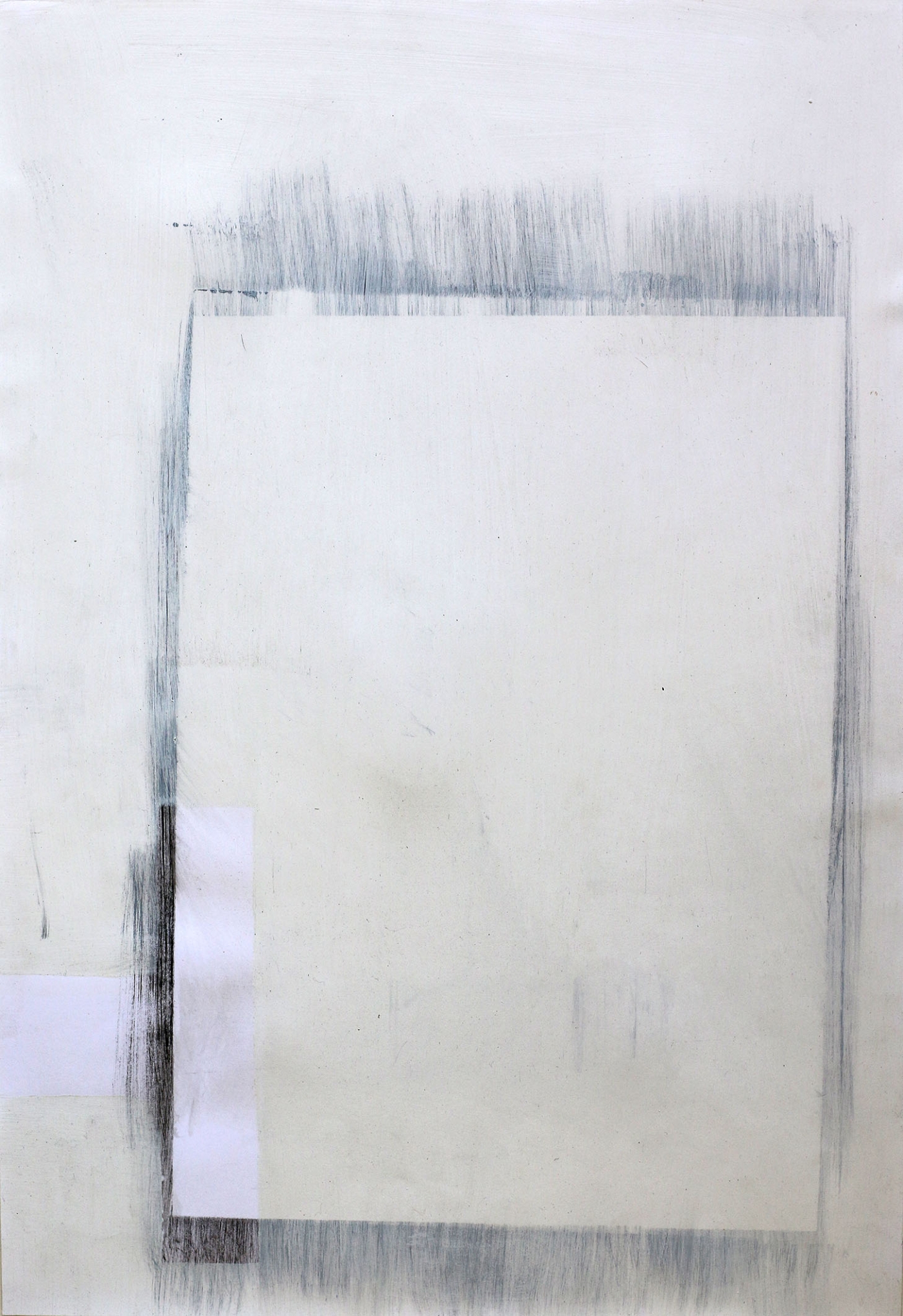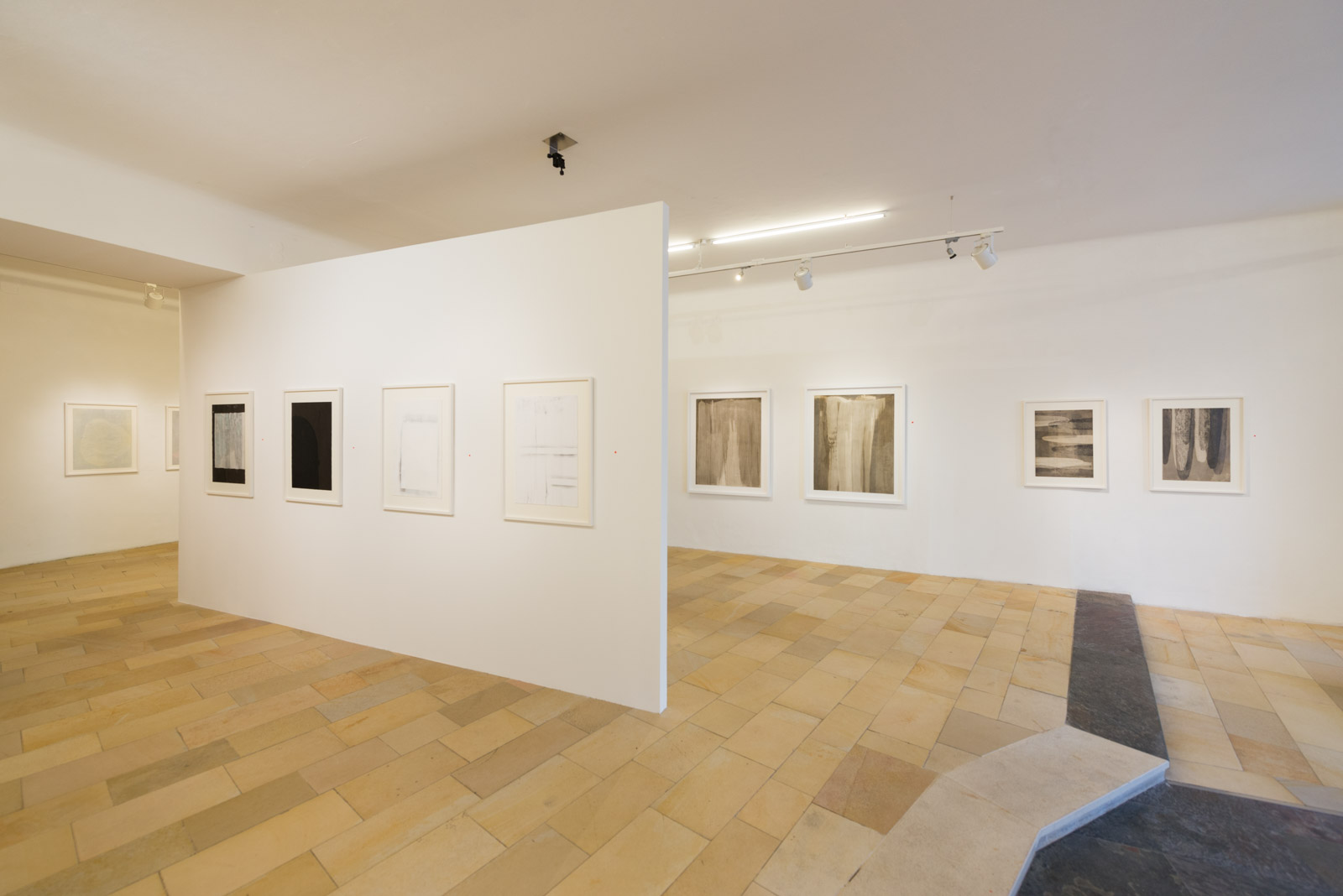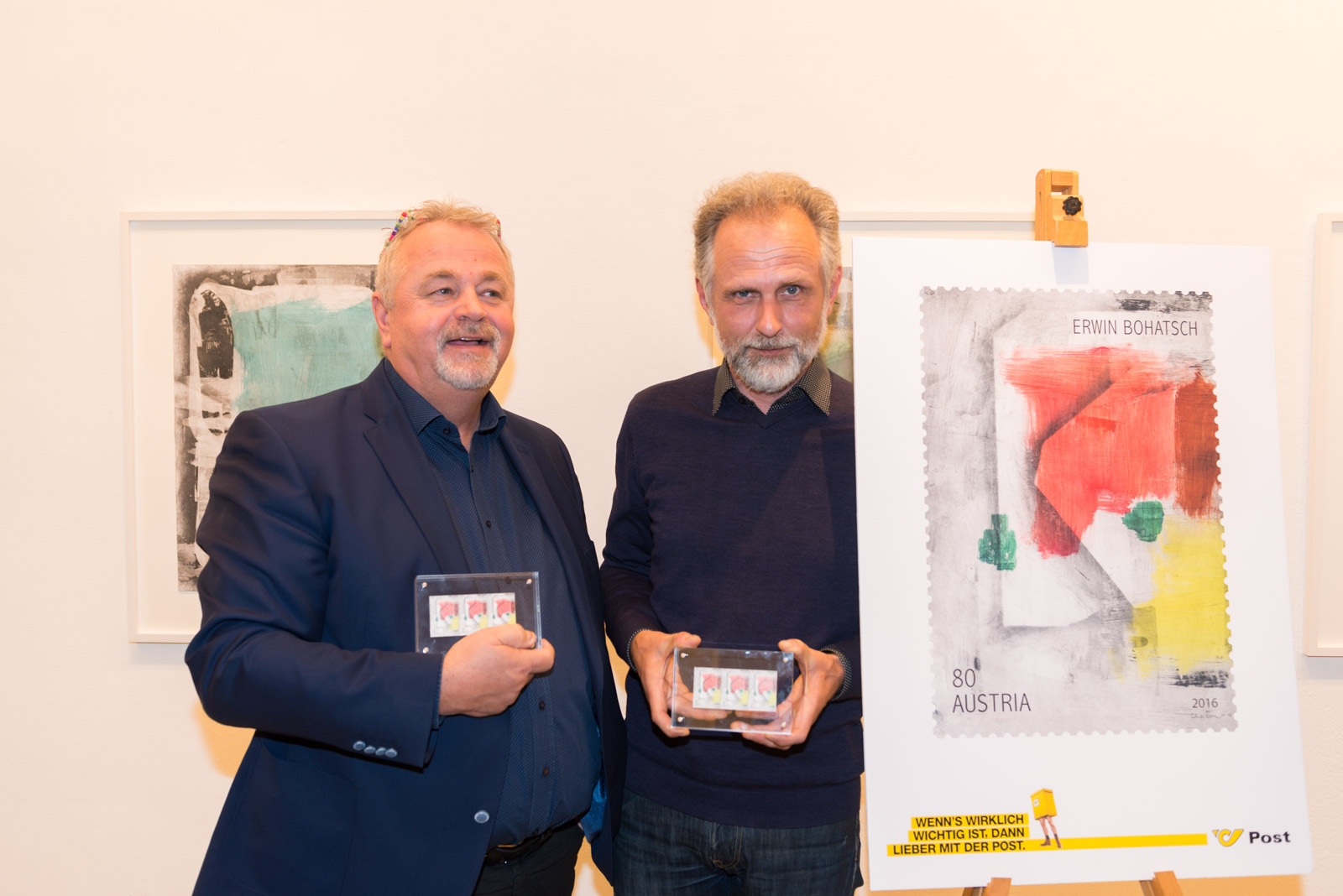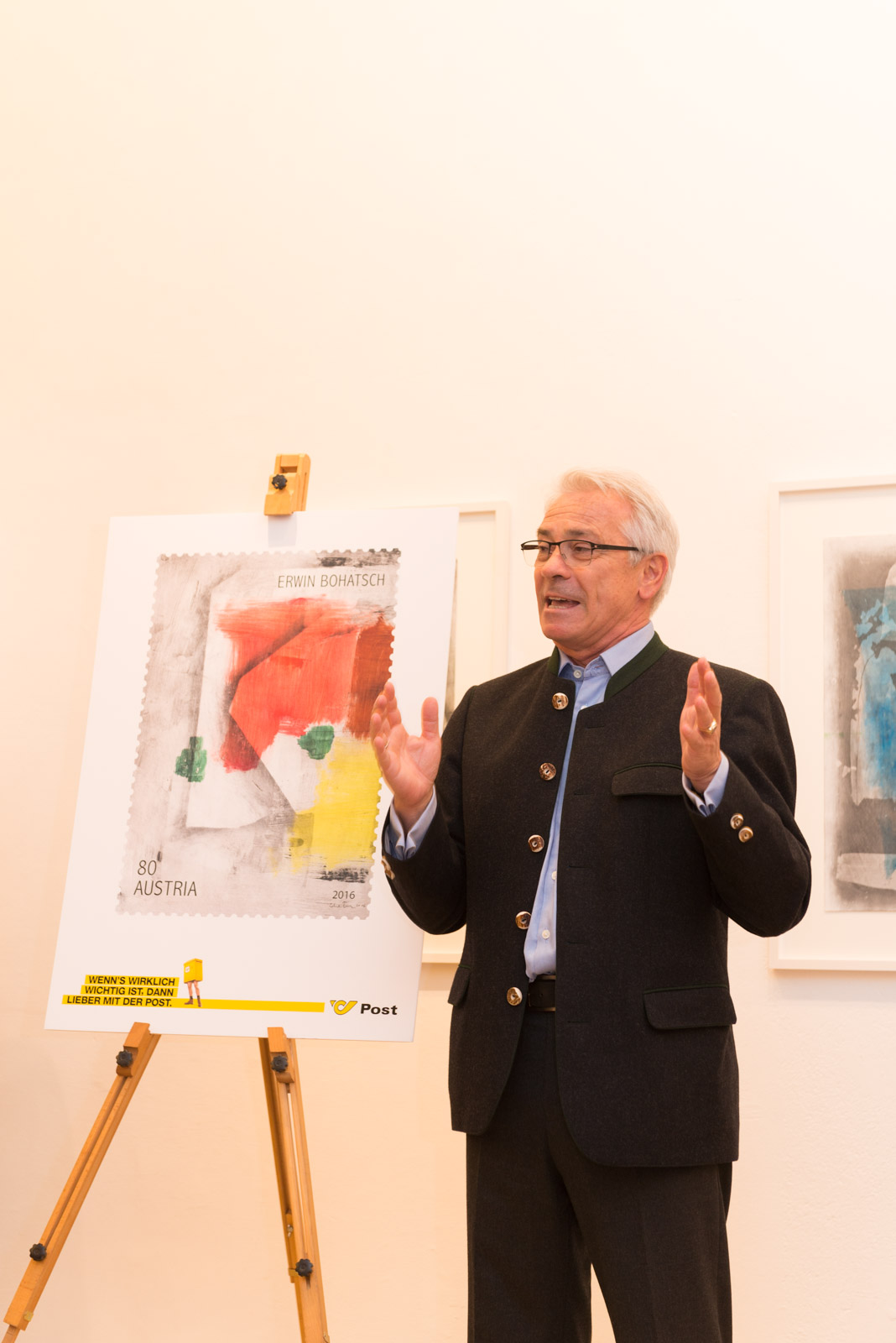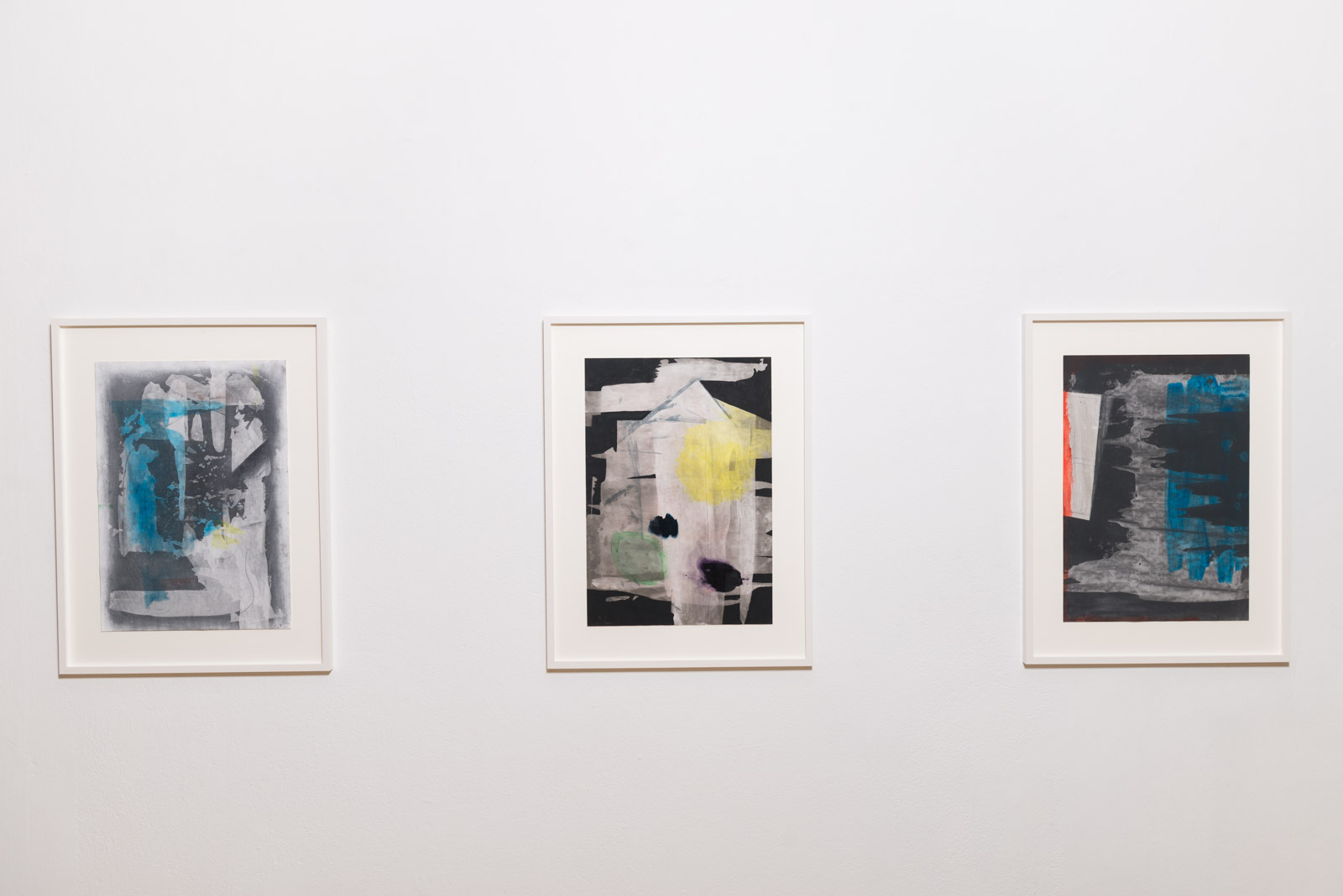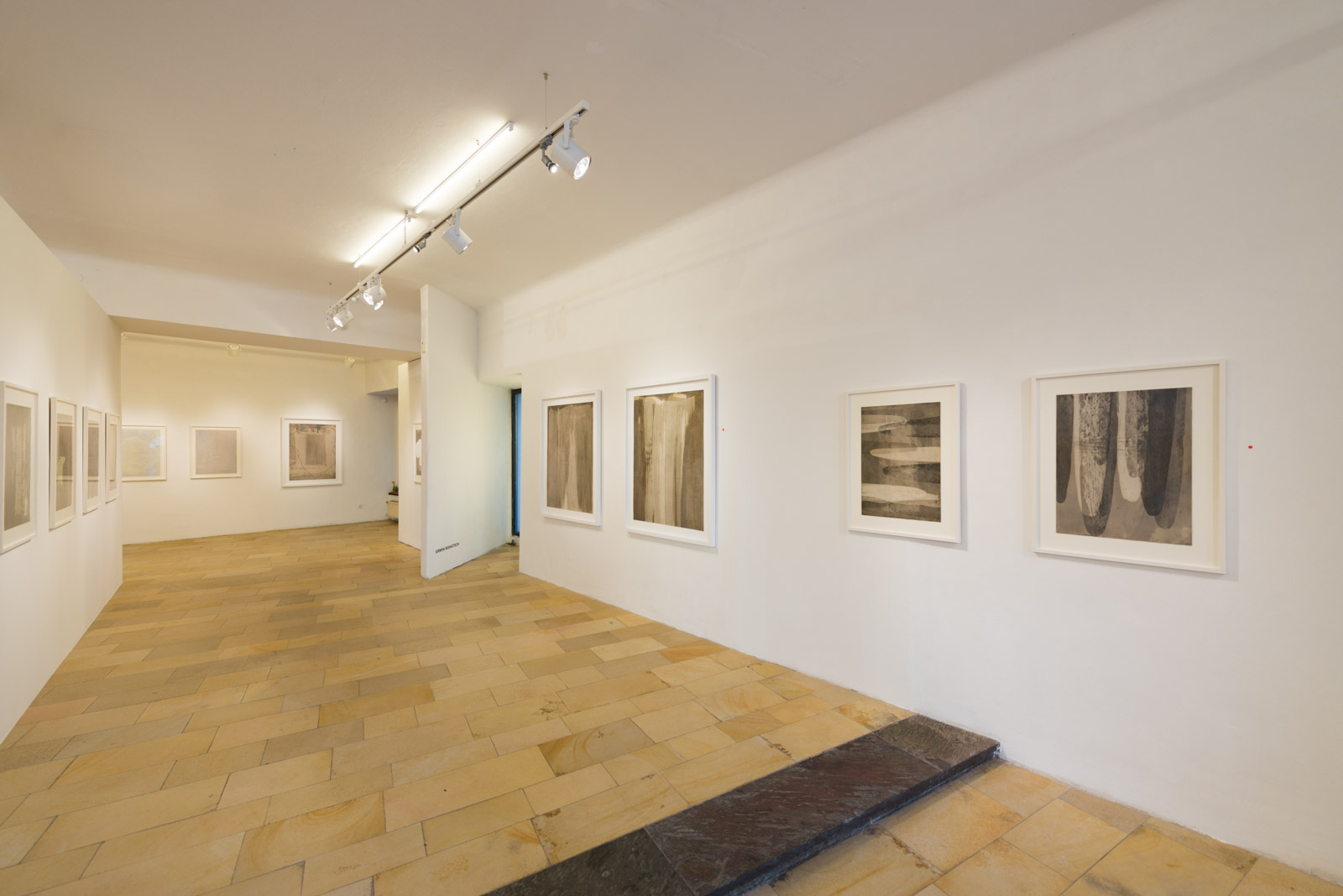Introduction by Günther Holler-Schuster
EXHIBITION 12th of April until 8th of May 2016
On the occasion of the comprehensive retrospective at the Albertina in Vienna (8 April – 12 June 2016), the Reinisch Contemporary gallery is staging an exhibition devoted exclusively to the works which Erwin Bohatsch has created on paper.
Most of them consist of small formats into which Bohatsch has further condensed his painting currency. Much like his large-format canvases, where the physicality of the material or the textile structure of the background play a central role in the design, they also address the issue of painting techniques. An aesthetics of absence and a poetry of emptiness merge into the discussion on the endpoint of painting.
Bohatsch’s work is dedicated almost solely to abstraction and explores the possibilities of the medium from painting techniques from sensual experience to artisanal painting. Traces of the painting process on paper sometimes create an impression of the provisional and the processual. Time and again, reduction processes sometimes lead painting to its limits and at the same time raise fundamental questions in regard to the media. In such cases, the painted surface as a coloured area or empty space is accompanied by the discussion of painting techniques. Surfaces, spaces, brush stroke, dots, spots and colours, etc., become the defining issues given such paintings.
The emptied historical paintings of minimal art may be regarded as a final consequence of abstraction. Apart from the pictorial background with colour markings that partly assume an almost incidental character, nothing else indicates the cultural context of painting. Bohatsch frequently latches onto this tradition and tries to escape from this form of painting minimalism. In principle, he constantly finds that any application of paint on a surface becomes a painting. At first glance, Bohatsch’s “analytical” access appeals to the viewing public’s awareness of the long development of painting. Again and again, familiar and apparently decipherable structures are broken up or destroyed. Frequently, what remains is solely the attempt of a visual formulation. Led radically to its endpoint, painting here becomes its own memory. Bohatsch goes about his work in a very calculated way and leaves nothing to chance. He often creates the fleeting impression of complex designs, but these quickly recede: only traces and markings remain. Dots, spots and lines can no longer serve as a representation or illusion of reality. Rather, he invokes pictorial reality in its exclusivity.
Consequently, Bohatsch does not regard his works on paper as precursors to paintings on canvas. Instead, he creates them as an extension of painting options. If a canvas still has the cultural charge of what is traditionally viewed as artistic, paper – as a background for painting – tends to be defined more by the spontaneity and triviality of the material.
Günther Holler-Schuster



